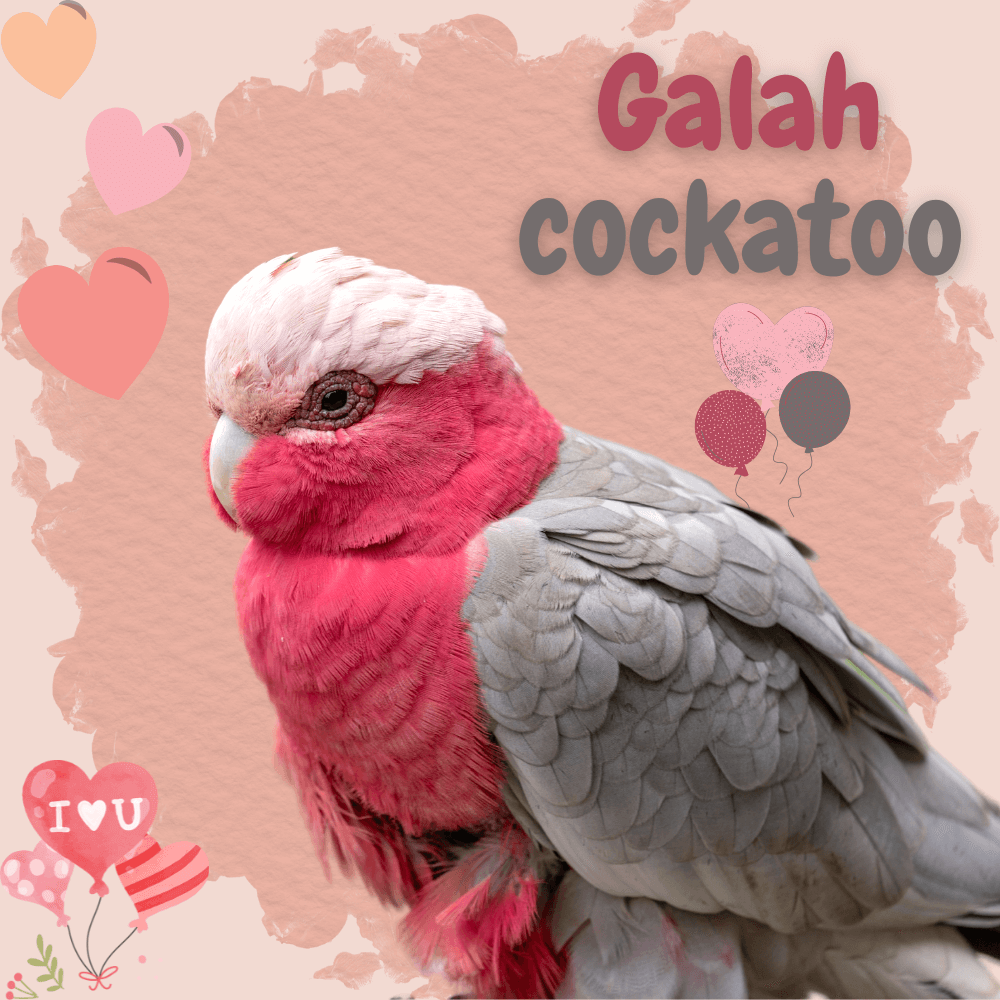The Galah Cockatoo has a very striking color. And like all birds, it has surprising physical and behavioral characteristics that deserve to be known.
Did you know that there is a pink-colored cockatoo? Nature constantly amazes us with its palette of colors. The Galah Cockatoo is pink and gray. This cockatoo is the most common in Australia and one of the few native species to have flourished after European conquest.
“Galah” is the Aboriginal name for these birds, coming from Yuwaalaraay, the language spoken by the natives in what is now the state of New South Wales.
Interestingly, in English, the word for this bird is also used as a slang term meaning “clown” or “crazy”, due to the pirouettes and amusing behavior of these birds. So read on to learn more about this unique cockatoo.
Where does the Galah Cockatoo live?
There are several subspecies of this bird ( Eolophus roseicapilla ), also known as Galah. However, they are all very similar and live all over Australia, even in city parks.
Most Galahs spend their days sheltering in trees or bushes, but come evening they gather in large, noisy groups. Experts say it’s common to see them covering almost the entirety of a tree. It is also common to observe them feeding on seeds in grasslands.
Moreover, there is a record that indicates that these birds are found in a neighboring country of Australia: New Zealand. But it is estimated that the population in this area is around 100 specimens, so it is very localized.
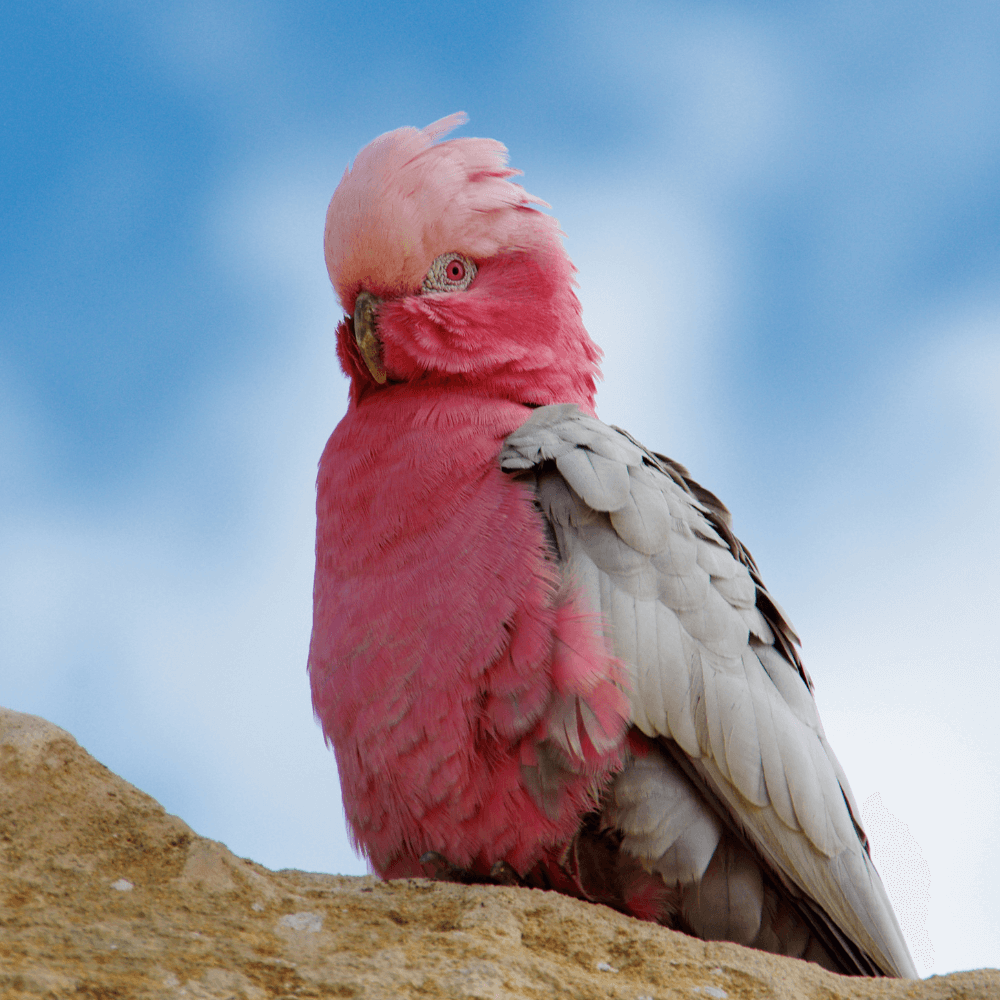
In some backyards
Many of these cockatoos can also be found in the backyards of Australian homes – and in other countries – as pets. Added to its attractive colors and fun personality is the fact that this bird is an excellent mimic of voices and sounds. For these reasons, it is very popular as a pet.
In the wild, these birds live about 25 years, but in captivity, they can live up to 80 years. Like the rest of the parrots and cockatoos, it is a very long-lived bird.
Galah cockatoo personality
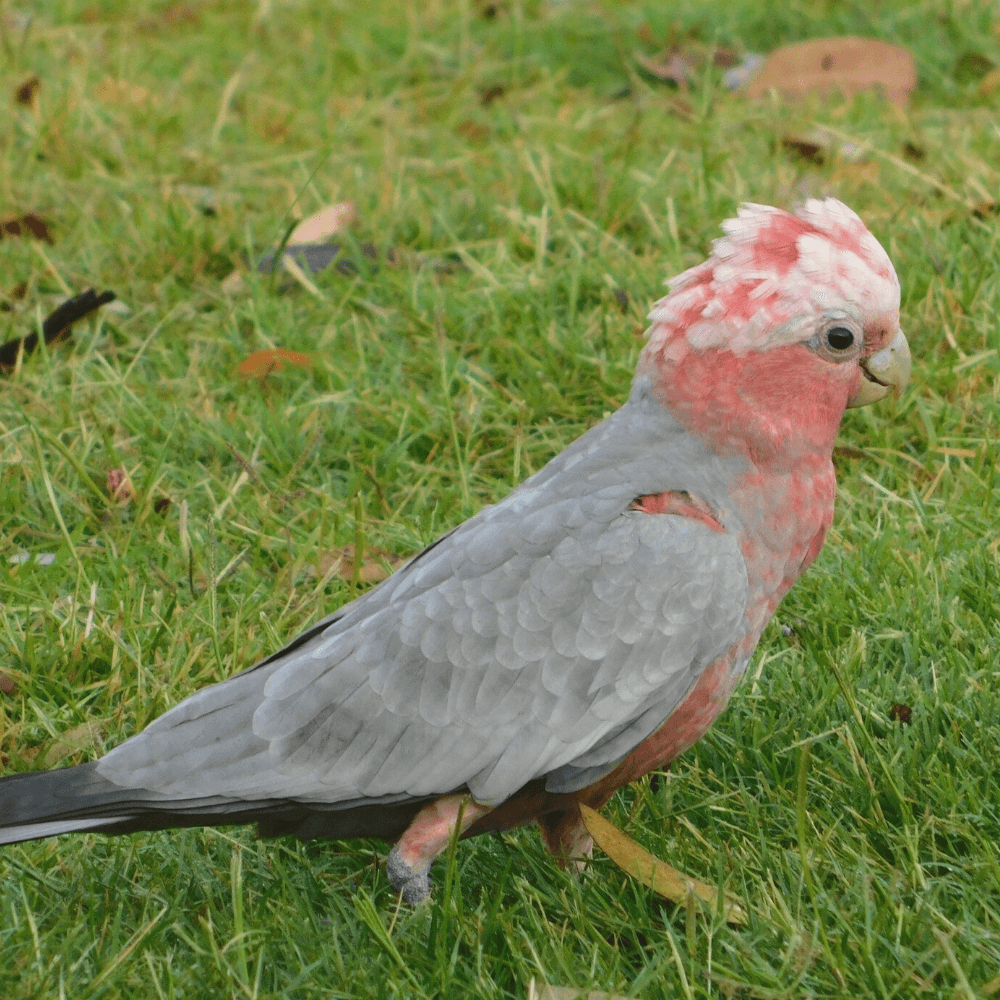
This amazing bird measures about 36 centimeters and weighs between 270 and 350 grams. It is a small cockatoo with a bright pink neck, chest, and underwing. It has a cephalic crest with pink feathers. Its back, tail, and upper wings are pale gray.
Males and females are very similar in their plumage. To tell them apart, just look at their eyes: males have dark brown or black eyes, while females have pink or red eyes.
Galah cockatoo behavior
They are gregarious birds. These cockatoos live in large groups of up to 1000 birds, consisting of pairs and small social groups, which come together to feed and rest. At dusk, they perform stunts before falling asleep: they fly rapidly through the trees, dive to the ground, and cry loudly.
In this species, a male and a female mate for life. For this reason, Galahs spend most of their time in pairs, eating, cleaning, and playing together. They are very sociable and affectionate animals.
Pairs return to the same nesting site each year and defend it against other Galah Cockatoos or animals of different species. Once in the place of their choice, they prepare the nest for the eggs, covering it with eucalyptus leaves. To communicate to other cockatoos that this house is occupied, they chew most of a branch near the nest.
Food and reproduction
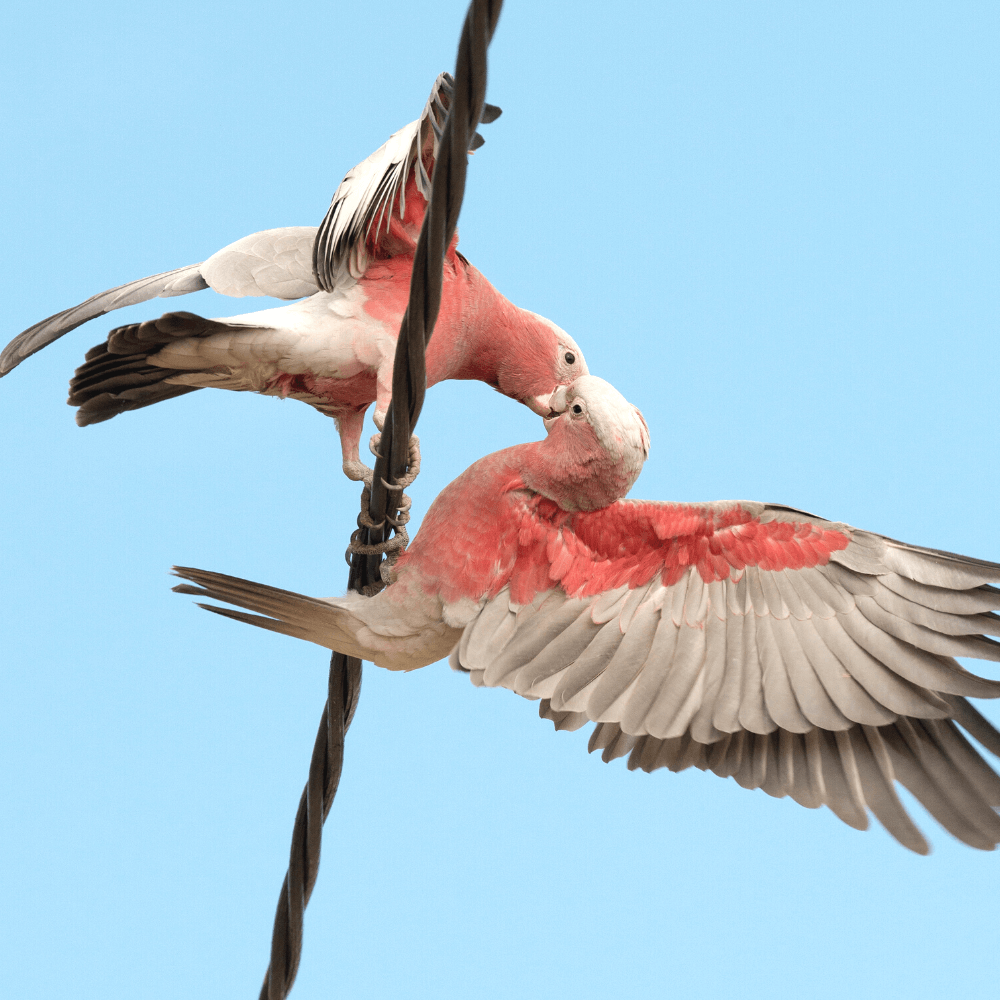
During courtship, the male raises his crest of feathers, moves his head from side to side, and struts along a branch towards the female, uttering soft sounds. Once copulated, they nest in the hollow of a tree, typically formed by termites. Both males and females incubate the eggs and feed the young.
The female lays 4 to 6 eggs, but unfortunately only half survive on average. When the young cockatoos are ready to leave their nest, the parents continue to care for them for about 6-8 weeks, but then they become independent.
As they feed on seeds, grasses, and herbs, it is common to see them on the ground, which makes them vulnerable to certain predators, such as foxes. The advantage is that they feed in large herds, where there are always several guards who warn when danger is approaching. Cockatoos are not noisy for fun, but to ensure their survival.
Do galah cockatoos talk
SOURCE: African Grey Parrot Pet
Galah subspecies
Studies indicate that there are still discrepancies with respect to the status of the genus Galah and that they can be found under the taxonomic criteria Eolophus and Cacatua. However, there are 3 subspecies of Eolophus roseicapilla, all very similar to each other. These are the following:
- Eolophus roseicapilla roseicapillus: This is the most common subspecies in aviculture and in the wild in much of Australia. It is an oriental bird found in eastern, northeast, southern, and central Australia and Tasmania, where it was introduced. It is distinguished by a whiter crest than its relatives and a pink ring around a brown or black eye.
- Eolophus roseicapilla assimilis or E. r. albiceps: Found across much of Western Australia, it is distinguished by a paler body color and a larger pink crest. The ring around its eye is white, and its head is larger than that of the others.
- Eolophus roseicapilla kuhli: This subspecies is found in the northern part of Western Australia. It is smaller and lighter in color than the other two subspecies. Its head is smaller, it has a pink crest, and the ring around its eyes is reddish in color.
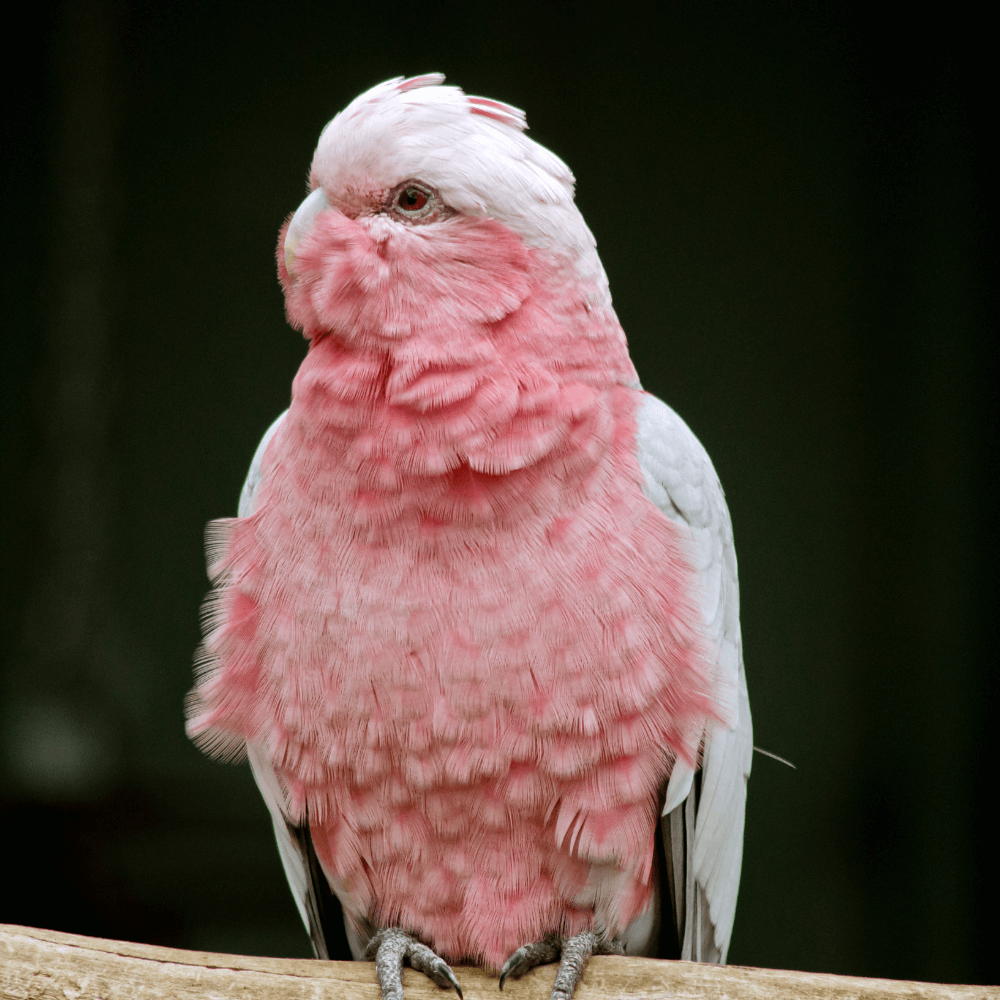
Galah Cockatoo Diseases
Cockatoos are hardy and resilient birds. However, there are several infectious and non-infectious diseases that Galahs and other cockatoos, in general, are susceptible to. Among them are the following:
- Viral diseases: Avian flu is extremely common in this group.
- Polyomavirus: This disease is caused by a double-stranded DNA virus that poses a major threat to caged birds.
- Parrot fever: It is known as psittacosis in the veterinary field. It can be transmitted to humans, so it is a zoonotic disease that must be taken into account at the health level.
- Bacterial infections.
- Candidiasis: Various types of fungi can cause yeast infections, especially Candida albicans. It is also known as acid crop disease because one of the first clinical signs is an injured crop with a whitish film.
Threats and conservation status
Its current conservation status is not of concern and its population is increasing. It is estimated that there are around 5 million pink cockatoos in the world.
They are beneficial birds in their native ecosystems as they prevent the spread of certain weeds. But in much of Australia, they are considered pests, due to their destructive potential.
Cereal crops suffer heavy losses every year, and the trees where these birds live are frequently destroyed. The most common causes of death for these birds are car crashes, cat attacks, and farmer gunfire, as studies indicate.
Galah cockatoos have successfully adapted to suburban areas, due to the abundance of water and seeds available in parks, farms, and backyards across Australia. However, urbanization and logging are detrimental to this species, as the loss of large trees makes it difficult to find permanent nesting sites.
Related article:

